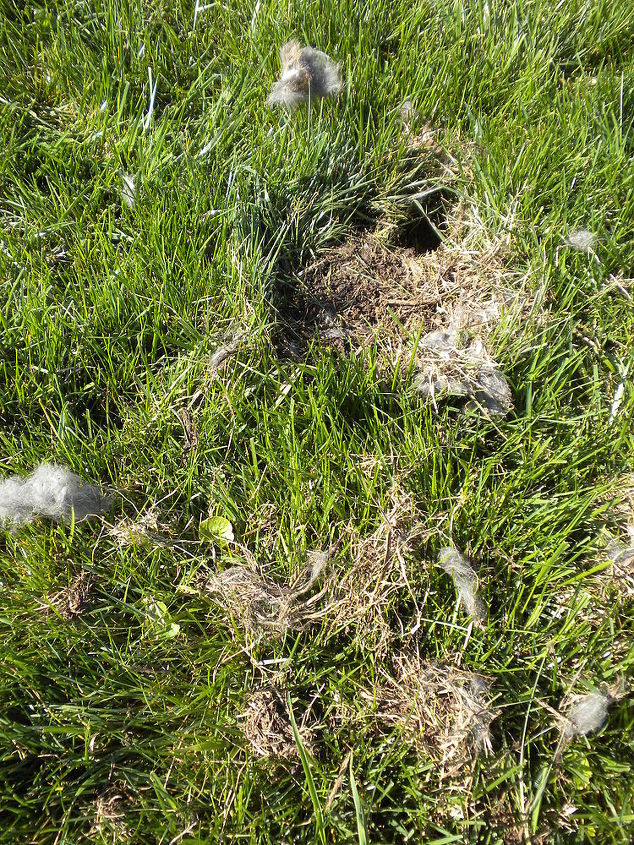Home made way to get rid of outdoor rats?

Related Discussions
GNATS - How to get rid of them?
Somehow my house and garden got tiny gnats that killed my fuchsia plant and fly everywhere. I have tried ALL the Web recommendations - soap and oil dishes, sand in th... See more
Marigolds growing! Should I pinch the buds?
My marigold plants are growing. I heard that pinching the buds until Autumn will allow them to grow without killing the plant. Is this true?
Growing garlic
Growing our first garlic, should we wait until the leaves are drying out before we pick it? Husband picked first one today along with our first potatoes.
How to keep mice out of your garden?
Hi everyone, I have mice in my garden destroying my vegetables and I have also noticed them in the barn and shed. Please can someone tell me how to prevent them from ... See more
What's the best flower/plant to grow in Texas?
I know that opinions vary, but what's your opinion?!I have great luck w Rosemary plants. Green all year long.
How do you get rid of a bat that has made its home in a light fixture?
Can someone tell me what kind of animal this was in my yard?
I thought maybe a rabbit was burrowing in my yard, but it's almost dead center of my lawn (not a very smart rabbit). The hole is not very deep, and I replanted it onc... See more




Adopt a kitty......all 3 of mine are hunters and bring me gifts every week!
MOTH BALLS
Buy special rat poison, put it where the dogs, cats, etc can not get in it and they will be dead in a week once eaten.
Trapping is an underrated method of controlling rodents. One reason trapping is often overlooked is that snap traps have been around for a long time and are cheap. Traps can be used to eliminate rats where poison baits would be dangerous, to avoid dead rat odors, and to eliminate bait-shy rats.
It is important to place traps where the rats are. Rats and mice are used to human odors so there is no need to use gloves when handling traps. Since mice travel only 10–30 feet but rats travel 100–150 feet from harborages, more traps are needed to trap mice than rats in a house.
Rats and mice also have different behavior around new objects. Rats are cautious, and it may be a week before they approach a trap. Mice are curious and will normally approach traps the first night. If you don't catch a mouse in the first few nights, the trap is in the wrong location. To help rats overcome trap shyness, place traps unset, in place, for several days. This allows rats to overcome shyness and results in better catches.
Baited traps rely on the rat's being attracted for feeding. The bait must compete with other available foods, so no one bait is ever the best bait for all locations. Rodents living on garbage or spoiled food prefer something fresh. The following are some baits that have proven to be successful:
Baited traps should be set a right angles to rat runs (Figure 6). Traps can be nailed to rafters and beams to take advantage of areas where rats travel. Set traps along walls, behind furniture, and near holes. Remember to set traps where children and pets will not be hurt.
Runway traps—catch rats when they accidentally bump the trigger. Runway traps are available or can be made from snap traps by enlarging the trigger with cardboard, hardware cloth, or screening (Figure 7). There is no bait to go stale, so there is an increased chance of success. In placing runway traps, the trap should be placed at right angles to the wall or along runways. To hold the trap in place on pipes or rafters, use rubber bands, nails, or hose clamps.
Glue boards—Special glue can be placed in pie tins or paper plates. The glues do not harden but will hold a rat in place. Other rats become curious and also get caught. Placing a small piece of bait in the center of a glue board can increase effectiveness. Dusty and wet conditions will impair the trap's effectiveness. Glue boards are better suited for mice and safe for children and pets. Boards may be cleaned with cooking oil.
Poison Baits—Traps are effective usually when dealing with small numbers of rats or mice. When rats are plentiful or where unsanitary conditions exist with harborage, poisoned baits are an effective tool to use with trapping.
Poison baits are avilable as ready to use, premixed baits. They come in many forms; parafinized blocks for outdoor use and high humidity areas, treated meal, seeds, or parafinized pellets in bulk or in "place packs" for indoor use. Water baits are sold as packets of concentrate that are mixed with water.
They are administered with a chick fount, available at most feed stores, and are useful in areas where rodent food is abundant but water is in short supply.
Whenever a rodenticide is used, safety must be the first consideration. Poison baits must be placed where they are inaccessible to children, pets, livestock, and wildlife. Where rodent runs are exposed and in all outdoor situations, tamper proof bait boxes must be used. A tamper-proof bait box or station must be inaccessible to a 4 year old child or a dog. This means that the station can not be opened and the bait can not shaken out. Bait blocks must be secured inside the station or if loose bait pellets or meal is used, then the station must be secured to the ground so a child, dog or raccoon could not move it. Baits stations should always be placed near where rats live and breed or along travel routes.
For added effect, water may be provided separately for the rats to drink. Pick up dead rats wherever they are noticed. A few cases of pet poisoning have been reported when pets feed on dead rats or mice. When rats die in areas where they can not be removed, it may be necessary to vetilate the area or use odor absorbent or masking products. Usually anticoagulant poisoned mice are dehydrated and do not produce severe odor after death. Rats on the other hand are large enough to produce an unpleasant odor for up to two-four weeks if they die in inaccessible locations.
When you control your rats, encourage your neighbor to control their rats at the same time. The greater the area that is controlled, the more effective the results will be and the longer it will take new rats to migrate back to your property.
Check with your local county health department to determine whether a rodent control project is active in your neighborhood. They may be able to offer advice and aid in controlling rats.
I use peppermint and eucalyptus, place it on cotton balls and place in attics or areas where you think they are coming in at , they do not like the smell I have tried it and I place it even behind appliances or in my pantry
I don't know what kind of "rats" you have and are dealing with, but the folks who are suggesting poison, unless you are living alone with ZERO children around and ZERO domestic animals around INCLUDING BIRDS OF PREY which might eat them once they have eaten the poison....I wouldn't suggest it! We live out on the farm in South Dakota surrounded by the 3,000 acres of cropland and the farmers are spraying chemicals constantly already to kill everything on the crops! It's ALL going into EVERYONE'S BODY! If you don't think this is why cancer is on the rise???? The honey bees NEVER show up to our farm any longer! It doesn't take a smart person to figure these things out!
Please, don't poison. TRAP!
Use a bowl of Antifreeze.